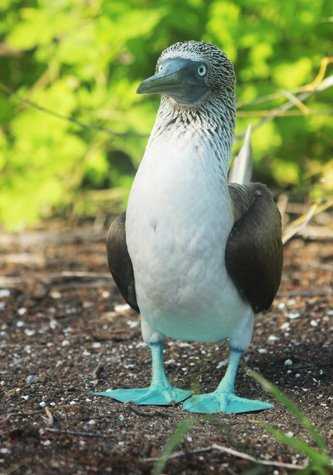On our third day of expedition we reach the southernmost tip of the Galapagos, Floreana Island. Floreana is also known as the island of mysteries, due to some extraordinary events that happened here in the 1930s, when some of the inhabitants died or disappeared under unclear circumstances.
We had an early wake-up call, in order to enjoy the sunrise, and afterwards we took a moderately-paced hike on an easy trail, which brought us to a brackish water lagoon where many different bird varieties can be found. We then continued to the other side of a tuff cone to another white sand beach, where sea turtles are known to nest. Several hundred of sting rays live here permanently and can be seen underneath the breakers along the beach. Soon we were ready to head back to the ship for a full breakfast before continuing with the program of the day on this beautiful island.
Around mid-morning, and after a short navigation, we reached Champion Island, where we went out for Zodiac ride to look for animals. We were looking forward to seeing sea lions, boobies, shearwaters, red-billed tropic birds, and many others, but the one that deserved a little more attention was a species of mockingbird that became extinct on the main island due to predators. Only a few survived here on this island, and we were happy to have a few very close and unexpected encounters with them. It was good to see that they are still with us.
Our next outing was snorkeling in one of the most beautiful locations here, due to the presence of multiple species of fishes and other creatures. One of them is the playful Galapagos sea lion that was available to give us the best moments of the session. Large schools of attractive fish of many kinds also make the place very unique.
Some guests then departed for kayaking around small islands, which are usually teaming with wildlife, while others just disembarked on the beach at Post office bay for photography and relaxation. Later our full group came together again for a visit the old mail barrel, which has been used since the late 1700s to by whalers to facilitate communication with home. This tradition still works today, and it has become very well-known among visitors to the Galapagos Islands. All you do is read through the letters in the barrel and look for any that are addressed to your hometown, or nearby. Then you bring it back with you and hand-deliver it, the old-fashioned way. It is fun, effective, and no stamps are needed!
The last activity of the day was a Zodiac ride around some rocky island, looking for interesting wildlife, while the sunset was giving out the last warming rays of a phenomenal expedition on this island.



.jpg?width=106&height=85&mode=crop&scale=both&quality=50)


